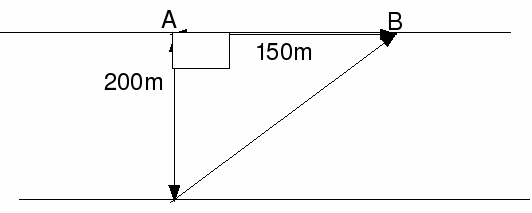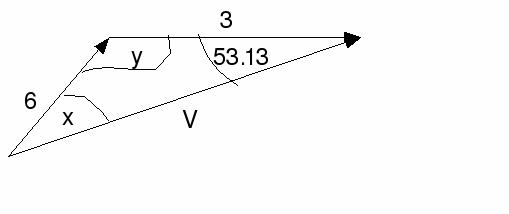Planes rarely fly in the direction they are pointing. If the wind is blowing and the world is turning the pilot has to take account of these when he plots a course. Even with modern gps systems available, , it is beneficial to the pilot to take these into account because of the resulting increase in fuel efficiency. It is worse though for the sailor, who has to take the tide into account as well
We can deal with these problems by representing the velocities of the wind, tide and boat as vectors, then using trigonometry to find the course to take or the velocity to travel at.
For example:
A motor boat travels in a straight line across a river which flows at 3m/s between straight parallel banks 200 m apart. The motor boat, which has a top speed of 6m/s in still water, travels directly from a point A on one bank to a point B, 150m downstream of A, on the opposite bank. Assuming that the motor boat is travelling at top speed, find, to the nearest second, the time it takes to travel from A to B.
What is the first thing you do? DRAW A DIAGRAM!!

The boat has to steer a course of![]() The river is flowing downstream to the right at 3m/s. We don't know the direction in which the boat will steer but we do know the bearing of B from the start point is 36.87 hence the angle BA makes with the horizontal is
The river is flowing downstream to the right at 3m/s. We don't know the direction in which the boat will steer but we do know the bearing of B from the start point is 36.87 hence the angle BA makes with the horizontal is![]() We can draw the following diagram:
We can draw the following diagram:

We need to calculate V, the resultant velocity. Using the sine rule we can find x:
![]()
Then![]()
Now use the cosine rule to find![]()
Then the time to reach B is![]() .
.
